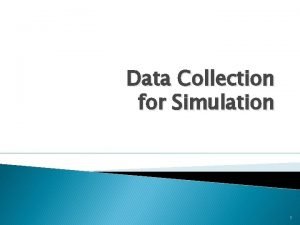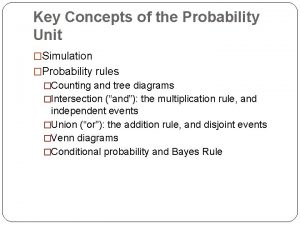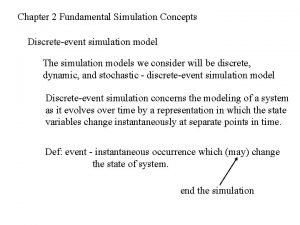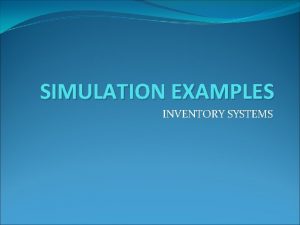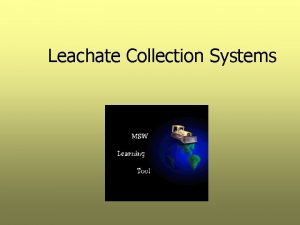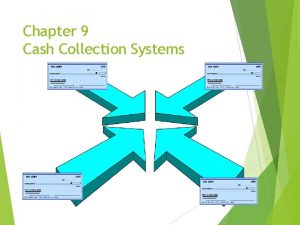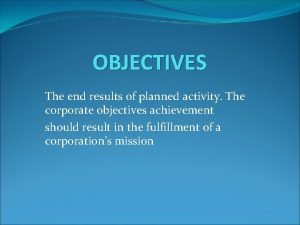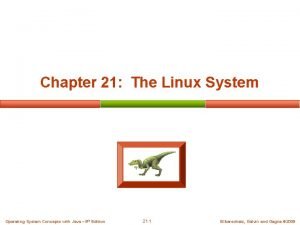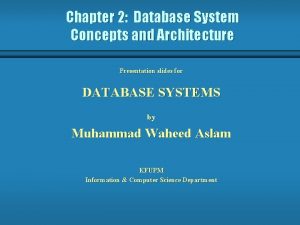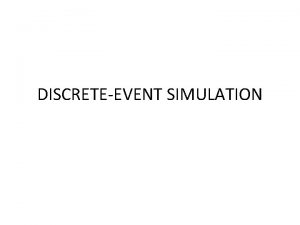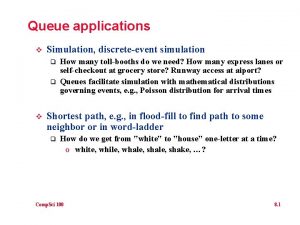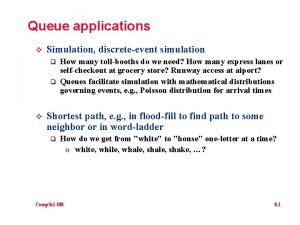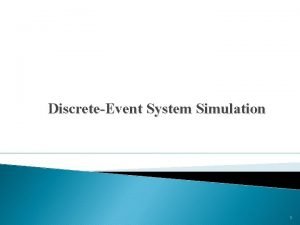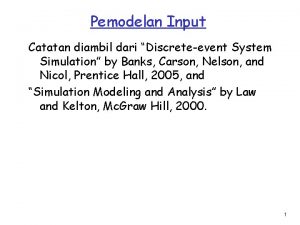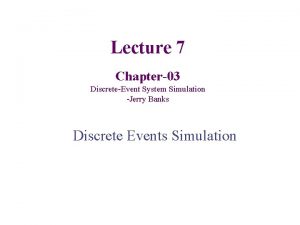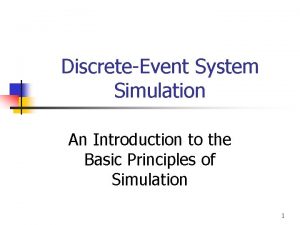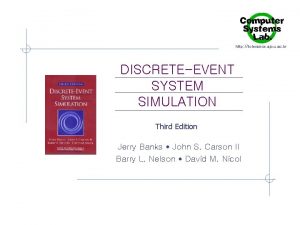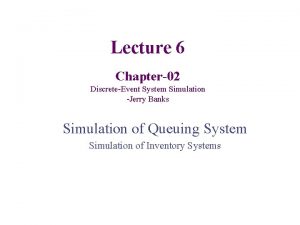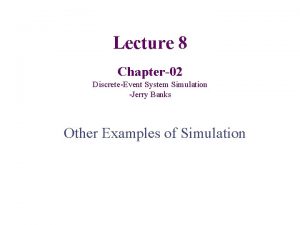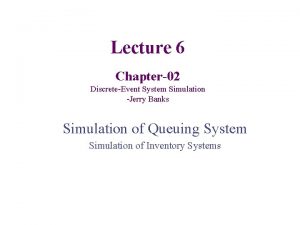Concepts In DiscreteEvent Simulation System A collection of
















- Slides: 16

Concepts In Discrete-Event Simulation • System A collection of entities (people and machines. . ) that interact together over time for one or more goals • Model An abstract representation of a system, usually containing structural, logical or mathematical relationship that describe a system in term of state, entities and their attributes , sets, processes, … • System state A collection of variables in any time that describe the system • Entity Any object or component in system that require explicit representation (server, customer, . . . )

• Attributes The properties of an entity • List A collection of associated entities , ordered in some logical fashion (FIFO, priority, …) • Event An instantaneous occurrence that changes the state of a system • Event Notice A record of an event to occur at the current or future time (type and time) • Event List FEL (future event list) • Activity (unconditional wait) A duration of time of specified length (service time or interarrival time, … )

• Delay (conditional wait) A duration of time of unspecified indefinite length, which is not known until it ends (customer delay in waiting line) • Clock A variable representing simulated time

Activity vs. Delay • Activity – Activity is known as unconditional wait – End of an activity is an event, for this an event notice is placed in the future event list – This event is a primary event • Delay – Delay is known as conditional wait – Delays are managed by placing the entity on another list, e. g. , representing a waiting line – Completion of delay is a secondary event, but they are not placed in the future event list

Able-Baker Call center • System state LQ(t): the number of callers waiting to serve LA(t): 0 or 1 indicate Able is idle or busy LB(t): 0 or 1 indicate Baker is idle or busy • Entities • Events Neither Callers nor the servers need to be explicitly represented except in terms of state variables. Arrival event, service completion by Able or Baker • Activities Service time by Able/Baker and Inter-arrival time • Delay A caller’s waiting time in queue until Able or Baker becomes free

• Simulation and Modeling Approaches: 1. Event-Scheduling Approach 2. Process-Interaction Approach 3. Activity-Scanning Approach

Event-Scheduling Approach • A discrete-event simulation proceeds by producing a sequence of system snapshots over time • A snapshot of the system at a given time includes


Example 3. 3 DESS of Grocery-Store

• System state LQ(t): the number of customers waiting to serve LS(t): 0 or 1 indicate Server is idle or busy • Entities Neither customers nor the servers need to be explicitly represented except in terms of state variables. • Events Arrival event(A) service completion/Departure event(D) Stopping Event(E)scheduled to occur at time t • Event Notices • Activities • Delay (A, t) Arrival Event to occur at future time t (D, t) Departure Event to occur at future time t (E, t) Stopping Event to occur at future time t Service time Inter-arrival time Time customer spend in waiting line




• Entities (Ci, t ), representing customer Ci who arrived at time t • Event notices (A , t , Ci ), the arrival of customer Ci at future time t (D, t , Cj ), the departure of customer Cj at future time t • Set : CHECKOUTLINE, the set of all customers currently at the checkout • counter (being served or waiting to be served), ordered by time of arrival


Process Approach of Modeling
 Simulation method of data collection
Simulation method of data collection Probability concepts in simulation
Probability concepts in simulation Fundamental simulation concepts
Fundamental simulation concepts Landsat collection 1 vs collection 2
Landsat collection 1 vs collection 2 Documentary collection vs documentary credit
Documentary collection vs documentary credit Inventory simulation examples
Inventory simulation examples Cushing reflex
Cushing reflex Leachate collection system diagram
Leachate collection system diagram The computer system is a collection of
The computer system is a collection of Time collection system
Time collection system Cash collection system
Cash collection system Planned activities
Planned activities Oracol saliva collection system
Oracol saliva collection system Database management system by korth
Database management system by korth Operating system
Operating system Linux operating system concepts
Linux operating system concepts Database system concepts slides
Database system concepts slides
